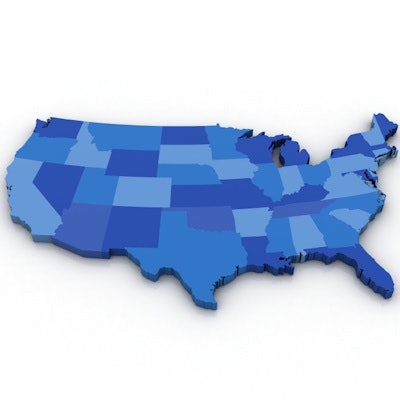
U.S. counties with higher social vulnerability had lower rates of compliance with breast cancer screening guidelines recommended by the U.S. Preventive Services Task Force (USPSTF), as well as other cancers, a study published September 27 in JAMA Network Open found.
Researchers led by Cici Bauer, PhD, from the University of Texas Health Science Center found "suboptimal" screening rates and geographic disparities for breast, cervical, and colorectal cancer. They also identified ties between area-level social vulnerability scores and cancer screening uptake.
"Even after adjusting for county-level access to care, urban-rural status, and percentage of the population that was uninsured, the association remained consistent," Bauer and colleagues wrote. "These findings add to a growing body of evidence on the influence of area-level social determinants of health context on population cancer prevention efforts."
Breast cancer incidence and mortality have been falling over the decades, a decline that many have attributed to mammography screening. Researchers noted, however, that screening rates for breast cancer, along with others, have been below the target range.
Because screening strategies are universal and target average-risk populations, researchers called for assessing the uptake of these prevention measures to help identify underserved populations. This includes identifying social determinants of health and their ties to population-based cancer screening.
One example the Bauer team wanted to focus on with their study was how area-level determinants capture conditions that commonly affect all individuals residing in the same area. To help with this, they used the social vulnerability index (SVI), developed by the U.S. Centers for Disease Control and Prevention (CDC).
The SVI quantifies the area-level social vulnerability at the U.S. county and census tract levels to identify areas most at risk during hazardous events and communities with the least infrastructure, fewest resources, and least access to health care. Previous research suggests the index also has ties to the use of health services and health-related outcomes.
The Bauer team's end goal was to look at geographic variations in cancer screening rates according to USPSTF guidelines and their links to county-level SVI in 3,141 U.S. counties for 2018. The group focused on breast, cervical, and colorectal cancer. The researchers also examined to what degree other measurements not captured by SVI, such as health insurance coverage and density of primary care physicians, are tied to the screening rates.
Overall, screening rates for all three cancers were higher among counties on the East Coast and West Coast, and lower among counties in the South and Midwest.
The study authors found a wide range of breast cancer screening rates at the county level, with a mean breast screening rate of 70.8%, below the target rate of 77.1% set in the Healthy People 2030 initiative. Screening rates ranged from 54% in McKinley County, NM, to 81.8% in Jefferson County, AL.
They also found a correlation between counties with higher social vulnerability index and lower cancer screening rates. Counties in the lowest quantile on the SVI scale had breast cancer screening rates that were 14% lower than those in the highest quintile. The rates were 20% lower for cervical cancer screening and 28% lower for colorectal cancer screening.
The researchers also found that the median percentage of uninsured population was 10.6%, with a range of 2.4% to 32.2%, which showed an increasing trend with SVI. Meanwhile, the rate of primary care physicians per 100,000 population showed a reverse association with SVI, the study authors wrote. This included higher rates among the less socially vulnerable groups, 61.4 per 100,000 for the lowest SVI quintile versus 43.9 per 100,000 in the highest quintile.
Bauer and colleagues called for geographically targeted public health interventions to be further informed and improved by a composite measure reflecting the multidimensional nature of social determinants of health.
"More efforts are still needed to better incorporate the SVI tool into assessing geographic disparities in cancer outcomes," they added.




















